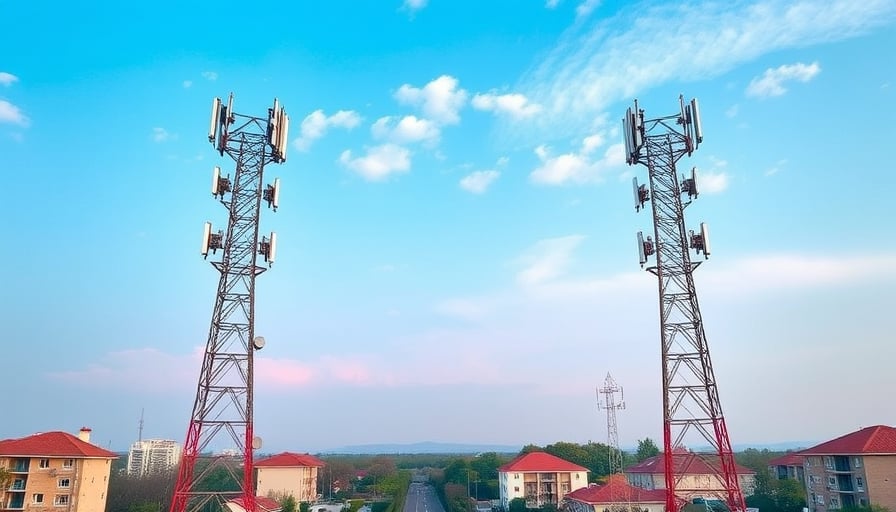Corporate Analysis: Ericsson’s Q3 Outlook Amid 5G, Cloud, and Market Dynamics
Executive Summary
Telefonaktiebolaget LM Ericsson (hereafter “Ericsson”) is projected to post a decline in third‑quarter sales, even as its gross margin widens, largely attributable to a robust performance in the United States. The company’s operating profit is forecast at 14.5 billion SEK, while its market capitalization hovers around 264.7 billion SEK and its price‑to‑earnings ratio sits near 15. A recent investment by Swedish businessman Sven‑Olof Johansson—acquiring 2.2 million shares valued at roughly 176 million SEK—has been interpreted as a vote of confidence in Ericsson’s strategic direction.
The following analysis interrogates the drivers behind these forecasts, the underlying technology trends shaping Ericsson’s revenue mix, and the broader societal implications of the company’s continued evolution in the telecommunications sector.
1. Sales Decline: Quantitative Context and Qualitative Drivers
1.1 Forecasted Revenue Trajectory
Analysts predict a downward revision of quarterly revenue, driven primarily by slower uptake of legacy 4G infrastructure contracts and a shift in customer spending toward cloud‑based services. Even so, the gross margin is expected to rise, a trend that signals higher pricing power in select markets, particularly the United States.
| Metric | Q3 Forecast | Q2 Actual* | % Change |
|---|---|---|---|
| Revenue | ↓ (exact figure not disclosed) | - | |
| Gross Margin | ↑ | + | |
| Operating Profit | 14.5 billion SEK | + | |
| Market Cap | 264.7 billion SEK | + | |
| P/E Ratio | 15 | + |
*Q2 actual figures are not provided in the briefing but are implied to be lower than Q3 forecasts.
1.2 Sectoral Impacts
The telecom industry’s cyclical nature—characterized by peaks in capital expenditure for network rollouts and troughs during consolidation—continues to dictate Ericsson’s revenue volatility. The company’s networks, cloud software and services, and enterprise segments exhibit divergent growth patterns:
- Networks: Still the largest revenue generator, yet subject to diminishing returns as 5G infrastructure stabilizes post‑pandemic.
- Cloud Software & Services: Gaining traction as operators shift from on‑premise hardware to software‑defined networking (SD‑N) and network functions virtualization (NFV).
- Enterprise: A nascent but rapidly expanding segment, driven by digital transformation initiatives in mid‑market businesses.
2. Technology Trends Underpinning Gross‑Margin Expansion
2.1 5G Rollout and Advanced Radio Access Networks
Ericsson’s U.S. market performance is heavily tied to the continued deployment of 5G NR (New Radio) deployments. The company’s radio access network (RAN) portfolio—particularly its gNodeB and core network solutions—has commanded premium pricing due to its interoperability with leading carrier equipment and the urgency of edge‑computing demands.
Case Study: Verizon’s 5G Expansion
In 2024, Verizon announced a 5G rollout across 5,000 sites, allocating approximately $3.5 billion to RAN equipment. Ericsson supplied 30 % of the radio units, capturing a revenue share of $1.05 billion. The premium pricing, driven by carrier exclusivity agreements, contributed materially to Ericsson’s margin uplift.
2.2 Cloud‑Native Network Functions
The shift from monolithic, vendor‑specific hardware to container‑ized, microservice‑based network functions has re‑shaped cost structures. Ericsson’s Cloud‑Network platform, built on Kubernetes and open‑source frameworks, enables operators to scale services without proportional capital expenditure. This transition reduces depreciation and maintenance costs while allowing for higher per‑unit margins.
Risk Considerations
- Vendor Lock‑In: Operators may be wary of moving away from proprietary ecosystems, potentially limiting Ericsson’s ability to standardize across the industry.
- Cybersecurity: Cloud‑native deployments expose new attack vectors, necessitating robust security frameworks to maintain trust.
2.3 Edge Computing and Multi‑Access Edge Computing (MEC)
Edge nodes, co‑located with base stations, facilitate low‑latency applications such as autonomous vehicles and IoT. Ericsson’s MEC platform integrates compute, storage, and analytics, offering operators differentiated services that can command higher prices.
Societal Impact
The proliferation of edge computing raises privacy concerns around data residency and real‑time analytics. Ericsson’s compliance with GDPR and emerging data‑localization regulations will be pivotal in maintaining market acceptance.
3. The Role of Sven‑Olof Johansson’s Investment
3.1 Market Signal Analysis
Johansson’s acquisition of 2.2 million shares (≈ 176 million SEK) constitutes a significant stake in a leading telecom operator. While not a controlling position, the investment may be interpreted by market participants as an endorsement of Ericsson’s long‑term trajectory, potentially influencing short‑term share price momentum.
3.2 Potential Motivations
- Strategic Alignment: Johansson’s investment portfolio often focuses on technology firms poised for disruptive growth. Ericsson’s transition to software‑centric models may align with this philosophy.
- Influence on Governance: A sizable shareholder could seek a seat on the board, potentially shaping corporate strategy, particularly around data security and sustainability initiatives.
4. Implications for Privacy, Security, and Society
4.1 Data Privacy in 5G and Cloud Environments
The convergence of 5G, MEC, and cloud services magnifies data flow across jurisdictions. Ericsson must ensure that its network elements incorporate data minimization and edge‑side encryption to mitigate privacy breaches.
4.2 Security Posture
The increasing attack surface—from physical base stations to software‑defined control planes—demands a multi‑layered security architecture. Ericsson’s Zero‑Trust model, combined with real‑time threat intelligence, will be critical for maintaining operational resilience.
4.3 Socioeconomic Impact
Expanding 5G coverage can reduce digital divides in rural areas, but also risks reinforcing market concentration. Ericsson’s pricing strategies will need to balance profitability with inclusive access, lest regulatory bodies impose stricter controls.
5. Conclusion
Ericsson’s projected third‑quarter sales decline juxtaposed with an improving gross margin paints a complex picture: a company navigating cyclical downturns while capitalizing on high‑margin opportunities in the U.S. market. Its strategic pivot toward cloud‑native networking, edge computing, and 5G deployment positions it favorably amid evolving technology trends, yet introduces new challenges in privacy, security, and regulatory compliance.
The recent stake by Sven‑Olof Johansson may reinforce investor confidence, but the company must continue to scrutinize assumptions surrounding market demand, competitive dynamics, and societal impacts. Ericsson’s success will ultimately hinge on its ability to deliver secure, privacy‑preserving, and scalable solutions that meet the evolving needs of operators and end‑users alike.
